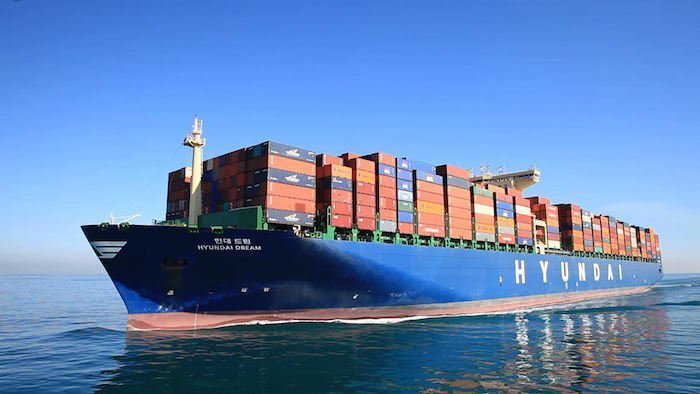Deal with Maersk and MSC cost HMM a quarter of its liner capacity

Hyundai Merchant Marine’s (HMM) deal to work with the two liner giants of the 2M vessel sharing agreement (VSA) has come at a high price as evidenced from data carried in the latest weekly report from analysts at Alphaliner.
Having been barred from entering THE Alliance, HMM top management flew from Seoul to Europe in the first half of 2016, anxious to thrash out membership of sorts to 2M, the VSA between Maersk and MSC. Time was ticking as HMM had to show Seoul a credible restructuring plan or face liquidation, something that ultimately hit compatriot Hanjin Shipping. The compromise agreed upon with Maersk and MSC has seen the HMM fleet drastically reduced.
While the total vessel capacity operated by the top 15 container carriers grew by 12.6% in the last year, two of this elite club suffered reversals – Japan’s K Line by 2.7% and HMM by a massive 23.9% from 456,000 teu in 2017 to 347,000 teu at the beginning of 2018.
“The reduction was due mainly the withdrawal of numerous HMM ships from the Asia – Europe and Asia – East Coast of North America routes. The ships were chartered out to Maersk and MSC under a strategic cooperation agreement, known as 2M+HMM, that took effect on 1 April 2017,” Alphaliner explained.
HMM sub-let three of its 13,092 teu ships and six units of 10,081 teu to Maersk and MSC, while two 8,566 teu units have been sublet to Zim.
Striking a defiant tone, HMM’s CEO C K Yoo commented at the start of this year that the company was planning to double its vessel capacity by 2022.
In contrast, the main gainer last year was the Maersk Group, whose operated capacity grew by 26.8% to reach 1.8m teu on 1 January 2018, up from 1.62m teu twelve months earlier, largely thanks to the takeover of German carrier Hamburg Süd.

Just had a look at GE and other giants and the preliminary advice is, grow big is maybe not a long term way when others are growing smart. It is fairly evident that we will see a change in the driving energy within the next 10 years and the more one needs to retrofit/restructure the more the problems.